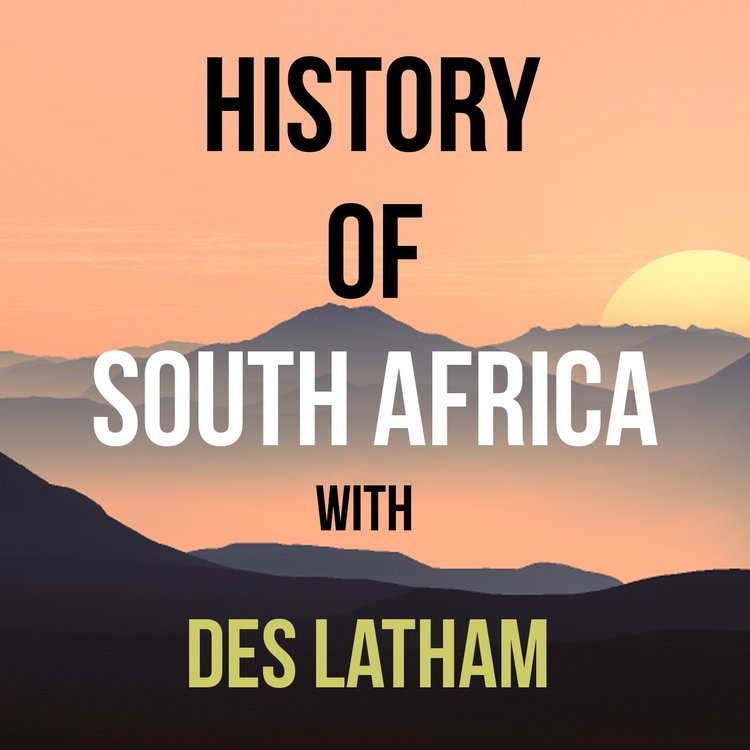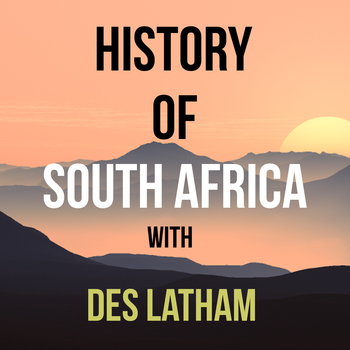
Episode 172 - The Republic of Potchefstroom, Potgieter treks into Bapedi country and Mswati faces rebellion
Loading player...
This is episode 172 and we’re galloping back to cover the effect of the Boers 33 Articles, approved by the Volksraad on April 9th 1844, and thus installing the little Republic of Potchefstroom.
Some of the articles and the fledgling laws and rules were going to crop up throughout the history of South Africa, all the way through to the time of apartheid, and even to the present.
If you recall, the Natal Boers and the Vaal Boers had been in dispute — largely because of the difference of opinion between their two leaders, Hendrick Potgieter on the highveld, and Andries Pretorius who had been based in Natal.
With the British declaring sovereignty over Natal, many Voortrekkers upped and offed, trekking back over the Drakensberg back to the transOrangia region, and up along the Vaal, while some ended up further north.
So we’re going to take a look at this period. In 1849 there was a temporary union between the communities north of the Vaal, who adopted what amounted to the basis of what was to become the Transvaal Constitution. This constitution continued until the foundation of the South African Republic — which was only repealed in 1901 when its provisions ceased to be applicable.
That is except for the application of the Roman-Dutch system of law. The thing to keep in mind was that the 33 Articles cannot be regarded as a formal constitution. For a start, there was no definition of various authorities in the State, and most of the 33 Articles were concerned with the procedure in the Courts.
When it came to matters of Government, even the most elementary kind, the Articles were silent. Each emergency that arose subsequent to it’s ratification in 1844 led to a rewriting of the Articles to cover for the gaps in how to manage the state. Even the Volksraad was referred to in the vaguest terms possible. Often when disputes arose, another constitution, that of the Winburg Boers, regulated the Articles.
Another character we’ve met pops up again. Johan Arnold Smellekamp - a citizen of the Netherlands. If you remember a previous podcast, he’d popped up in Natal and told the Volksraad in Pietermaritzburg that the Dutch Royal family was taking an active interest in the Voortrekkers.
He’d stretched the truth to say the least, and had many members of the Volksraad convinced that if they fought the English for Natal, the Dutch would come to their aid. Holland did not.
King William II rejected the proposed connection between the Netherlands and the Voortrekkers of Natal and before the year was out he apologised to White Hall for the affray caused by Smellekamp and his activities. That didn’t stop the self-aggrindising Smellekamp, who returned to Natal in 1843 but was refused entry into Port Natal by the British.
So he headed to Delagoa Bay instead, and after the creation of the 33 Articles in 1844 and the declaration of independence by the Potch Winburg republic by Hendrick Potgieter, Smellekamp popped up once again, riding into Potch that Winter.
This is where things get really interesting.
Partly owing to Smellekamp’s persuation, and partly driven by his own obsessions, Potgieter made the fateful decision to organise a new trek at the end of 1844, heading towards Delagoa Bay. After a few weeks they arrived at a site they called Blyde River. Happy River. Potgieter believed that this site was only three days ride from the sea. He was wrong. They setup a new settlement and promptly named it Andries-Ohrigstad. When Potgieter’s wagons rolled onto the hills of Ohrigstad of course, they were not empty of people — and this is again where the story gets more interesting — the plot thickens to a consistency of treacle. Because the people he met there were the baPedi, who’d been forced out of their ancestral land by the amaNdebele of Mzilikazi two decades earlier.
Take a look at a map and the location of iSWatini. By now it was being ruled by a very young King Mswati the First.
Some of the articles and the fledgling laws and rules were going to crop up throughout the history of South Africa, all the way through to the time of apartheid, and even to the present.
If you recall, the Natal Boers and the Vaal Boers had been in dispute — largely because of the difference of opinion between their two leaders, Hendrick Potgieter on the highveld, and Andries Pretorius who had been based in Natal.
With the British declaring sovereignty over Natal, many Voortrekkers upped and offed, trekking back over the Drakensberg back to the transOrangia region, and up along the Vaal, while some ended up further north.
So we’re going to take a look at this period. In 1849 there was a temporary union between the communities north of the Vaal, who adopted what amounted to the basis of what was to become the Transvaal Constitution. This constitution continued until the foundation of the South African Republic — which was only repealed in 1901 when its provisions ceased to be applicable.
That is except for the application of the Roman-Dutch system of law. The thing to keep in mind was that the 33 Articles cannot be regarded as a formal constitution. For a start, there was no definition of various authorities in the State, and most of the 33 Articles were concerned with the procedure in the Courts.
When it came to matters of Government, even the most elementary kind, the Articles were silent. Each emergency that arose subsequent to it’s ratification in 1844 led to a rewriting of the Articles to cover for the gaps in how to manage the state. Even the Volksraad was referred to in the vaguest terms possible. Often when disputes arose, another constitution, that of the Winburg Boers, regulated the Articles.
Another character we’ve met pops up again. Johan Arnold Smellekamp - a citizen of the Netherlands. If you remember a previous podcast, he’d popped up in Natal and told the Volksraad in Pietermaritzburg that the Dutch Royal family was taking an active interest in the Voortrekkers.
He’d stretched the truth to say the least, and had many members of the Volksraad convinced that if they fought the English for Natal, the Dutch would come to their aid. Holland did not.
King William II rejected the proposed connection between the Netherlands and the Voortrekkers of Natal and before the year was out he apologised to White Hall for the affray caused by Smellekamp and his activities. That didn’t stop the self-aggrindising Smellekamp, who returned to Natal in 1843 but was refused entry into Port Natal by the British.
So he headed to Delagoa Bay instead, and after the creation of the 33 Articles in 1844 and the declaration of independence by the Potch Winburg republic by Hendrick Potgieter, Smellekamp popped up once again, riding into Potch that Winter.
This is where things get really interesting.
Partly owing to Smellekamp’s persuation, and partly driven by his own obsessions, Potgieter made the fateful decision to organise a new trek at the end of 1844, heading towards Delagoa Bay. After a few weeks they arrived at a site they called Blyde River. Happy River. Potgieter believed that this site was only three days ride from the sea. He was wrong. They setup a new settlement and promptly named it Andries-Ohrigstad. When Potgieter’s wagons rolled onto the hills of Ohrigstad of course, they were not empty of people — and this is again where the story gets more interesting — the plot thickens to a consistency of treacle. Because the people he met there were the baPedi, who’d been forced out of their ancestral land by the amaNdebele of Mzilikazi two decades earlier.
Take a look at a map and the location of iSWatini. By now it was being ruled by a very young King Mswati the First.

